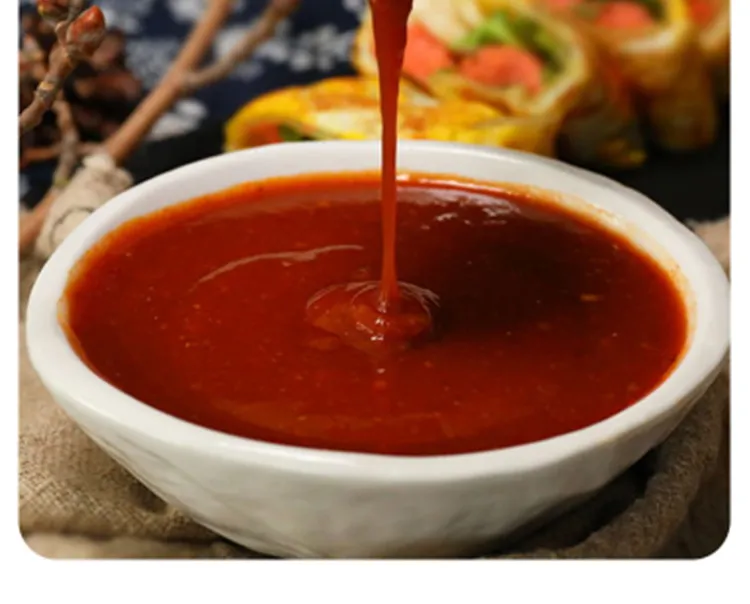Comparing Soba and Udon Noodles for the Ultimate Culinary Experience
Soba vs. Udon Noodles A Deep Dive into Japan's Beloved Noodle Varieties
In the realm of Japanese cuisine, noodles are more than just a staple; they are a symbol of culture, tradition, and culinary artistry. Among the many types of noodles that Japan has to offer, two of the most popular are soba and udon. Each has its unique characteristics, cooking methods, and uses, making them favorites both in Japan and around the world. This article explores the differences and similarities between soba and udon noodles, offering insight into their history, preparation, and diverse roles in various dishes.
Origins and Ingredients
Soba noodles are made primarily from buckwheat flour, which gives them a distinctive nutty flavor and a slightly darker color. The name soba itself means buckwheat in Japanese, reflecting its key ingredient. Historically, soba dates back to the Edo period, where it emerged as a popular meal among the working class because of its nutritional benefits and affordability.
On the other hand, udon noodles are made from wheat flour, water, and salt, leading to a tender and chewy texture. The origins of udon can be traced back to China, and it was introduced to Japan during the Nara period. Over the years, udon has evolved into numerous regional varieties, each with its unique thickness and preparation styles.
Texture and Flavor
One of the most significant differences between soba and udon lies in their texture. Soba noodles are typically thin and have a unique firmness that provides a delightful bite when cooked correctly. Their buckwheat base contributes to a somewhat earthy flavor, making them particularly suitable for cold dishes or light broths.
In contrast, udon noodles are thicker and chewier, providing a more substantial mouthfeel. The flavor of udon is milder, allowing it to absorb the taste of the broth or sauce with which it is served. This trait makes udon ideal for heartier, richer dishes, often featuring robust flavors.
Culinary Uses
soba v udon noodles

Soba can be enjoyed in various dishes, but it is perhaps most famous for its use in zaru soba, a dish where cold soba noodles are served on a bamboo mat with a dipping sauce. This method highlights the noodles' nuttiness and provides a refreshing contrast in hot weather. Soba is also versatile enough to be incorporated into soups and stir-fries, showcasing its adaptability.
Udon noodles, with their thicker silhouette, are often used in hot soup dishes like kake udon, where the noodles are served in a flavorful broth, often topped with scallions, tempura, or tofu. Udon can also be stir-fried in dishes like yaki udon, where the noodles are combined with vegetables and proteins for a savory meal.
Nutritional Benefits
From a nutritional standpoint, both soba and udon offer benefits, although soba is often considered the healthier option. Buckwheat is rich in fiber, vitamins, and minerals and has a lower glycemic index compared to wheat. This makes soba a favorite among health-conscious individuals. Udon, while not as nutritionally dense as soba, provides carbohydrates that are essential for energy, making it a suitable option for those seeking a fulfilling meal.
Cultural Significance
Both soba and udon hold cultural importance in Japan. Soba is often eaten on New Year's Eve as a symbol of longevity, while udon is commonly consumed during celebrations and festivals, signifying good fortune and health. These traditions contribute to the rich tapestry of Japanese culinary practices, where food acts not only as sustenance but also as a means of connecting with heritage and community.
Conclusion
In conclusion, soba and udon noodles each hold a cherished place in Japanese cuisine, representing rich cultural traditions and culinary diversity. While they differ in terms of ingredients, texture, and culinary applications, both offer unique flavors that delight the palate. Whether enjoyed in a simple bowl of zaru soba or a hearty serving of kake udon, these noodles celebrate the essence of Japanese food, showcasing the artistry and tradition that has been passed down through generations. Ultimately, the choice between soba and udon may come down to personal preference, but both are undeniably delicious and deserving of a spot on any dining table.
-
Unleash Your Inner Chef with Delectable Italian Pasta CreationsNewsAug.01,2025
-
Savor Health and Flavor: Irresistible Soba Noodles for Sale Await!NewsAug.01,2025
-
Nourish Your Body with Premium Organic Ramen - A Culinary Delight AwaitsNewsAug.01,2025
-
Elevate Your Dishes with Our Exquisite Kinds of Egg NoodlesNewsAug.01,2025
-
Dive into Flavorful Convenience with Our Ramen OfferingsNewsAug.01,2025
-
Discover Exquisite Types of Naengmyeon and Chilled Soba NoodlesNewsAug.01,2025
-
Is Whole Wheat Pasta Healthy?NewsMay.30,2025
Browse qua the following product new the we

















































































































